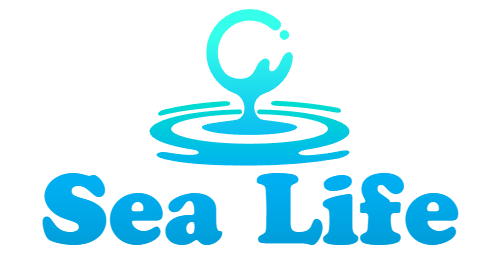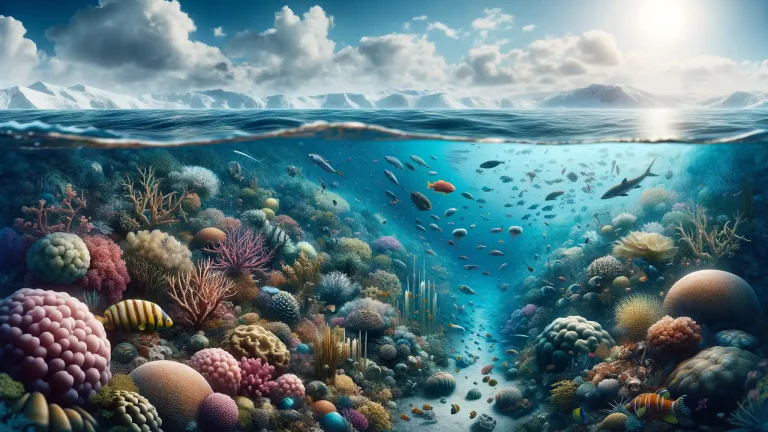Understanding Ocean Acidification
What’s Happening Beneath the Waves?
Picture this: the ocean, our planet’s soothing blue heartbeat, is quietly changing its chemistry. When we burn fossil fuels and release excessive carbon dioxide, the ocean absorbs about a quarter of it—a noble act, really. But here’s the hitch: that excess CO₂ reacts with seawater, creating carbonic acid. This mild acid doesn’t stay mild for long; it reduces the pH of the water, making it more acidic. Scientists call this process ocean acidification, but to marine life, it’s like an unexpected storm they weren’t prepared to weather.
The ripple effects are staggering. Shells of tiny sea creatures start dissolving like sugar cubes in coffee. Coral reefs, which so many marine species call home, stop growing as sturdily. It’s as if the very foundation of oceanic life is melting away.
What Does Acidification Do?
Here’s a visual: imagine you’re a shellfish, like a clam or a mussel. Your outer shell is your armor. Ocean acidification sabotages that armor by reducing the availability of calcium carbonate—a key ingredient shells depend on to form and stay strong. Here’s how it unfolds:
- Less calcium carbonate: Acidified oceans mean weaker shells for oysters, snails, and even coral skeletons.
- Imbalanced ecosystems: As certain species struggle, predators and prey alike feel the chaos ripple through the food web.
- Reduced biodiversity: The briny soup of life becomes noticeably less vibrant.
This isn’t just science for textbooks—it’s personal. These changes affect entire habitats, livelihoods, and even the food we put on our plates. The ocean, after all, connects us all.
The Effects of Acidification on Marine Ecosystems

Invisible Changes with Big Consequences
The ocean is like a vast, living tapestry. But imagine a few threads being pulled loose—this is what acidification is doing to our marine ecosystems. As CO2 dissolves into the water, it alters its chemistry, making it more acidic. The impact? A ripple effect, touching everything from tiny plankton to towering coral reefs.
Picture coral reefs as bustling underwater cities. Now, acidification weakens their very foundations—literally. Corals can’t build their skeletons properly, leaving them fragile and vulnerable. These “marine skyscrapers” crumble, threatening the countless species that rely on them for food and shelter. It’s like pushing millions of creatures out of their homes overnight.
A Chain Reaction Across Food Webs
When acidification strikes, some species face harsher consequences than others:
- Shell-forming creatures like oysters and clams struggle to survive as their calcium carbonate shells dissolve faster than they can form.
- Plankton, the microscopic crew at the base of the food chain, lose their armor. Without plankton thriving, larger fish and whales find their dinner plates alarmingly empty.
It’s not just about individual species—it’s the domino effect. If one piece falters, the entire puzzle of life follows suit.
Vulnerable Marine Creatures and Their Responses

When Shells Become Fragile: The Threat to Shelled Species
Imagine a world where your very home begins to crumble around you. For marine creatures like oysters, clams, and snails, this is not an abstract nightmare—it’s today’s reality. As the ocean absorbs more CO₂, it becomes acidic, stripping vital carbonate ions from the water. These ions are essential building blocks for their shells. Without them, these creatures struggle to grow, leaving them fragile and vulnerable.
Take the plight of the mighty yet delicate coral reefs as another example. These underwater cities, home to thousands of species, are built by minuscule architects—coral polyps. But in acidified waters, their skeletal structures weaken, jeopardizing the homes of fish, crabs, and countless other residents.
And here’s a heartbreaking twist: even tiny heroes like pteropods, the graceful “sea butterflies,” are at risk. Their thin, glass-like shells dissolve at alarming rates, reducing their role as a food source for whales, salmon, and seabirds.
- Bigger problem: Predators targeting shelled species could struggle too, with less prey available.
- Chain reaction: Ecosystems depending on these creatures risk cascading failures.
The ocean, it seems, is crying out for balance. Can you hear it?
Scientific Research and Case Studies

The Stories Data Can Tell
When scientists dive into the mysterious blue depths, they’re not just chasing sea turtles—they’re chasing answers. Research on ocean acidification is like connecting the dots of a massive, underwater jigsaw puzzle. But instead of pictures, these dots reveal how rising CO₂ levels are shifting delicate ocean chemistry. Are you picturing researchers in white coats? Well, imagine them aboard research vessels, calibrating instruments while waves crash dramatically against the hull.
One fascinating study revealed that the shells of pteropods—tiny marine snails often called “sea butterflies”—are dissolving in acidic waters. These creatures may be small, but their role in the marine food chain? Monumental. Without them, larger fish struggle to survive, and so does everything up the chain, including us.
- Another research team spent months observing coral reefs, documenting how these vibrant ecosystems are crumbling under acidification pressure.
- Elsewhere, experiments in controlled tanks showed how juvenile fish, exposed to acidic water, lost their ability to navigate—a life-or-death skill for dodging predators.
These aren’t just numbers; they’re snapshots of a world transforming before our eyes. Every graph tells a story, every test tube whispers a warning, and every finding gives urgency to our mission to protect marine life.
Potential Solutions and Mitigation Strategies

Rethinking Carbon Emissions: The Root Cause
To tackle ocean acidification head-on, we need to go straight to the source: excessive carbon emissions. Imagine the ocean as a vast sponge, soaking up carbon dioxide from the atmosphere. But this sponge is reaching its breaking point—it’s saturating, and the ripple effects are hurting marine life. We can’t ignore how critical lowering emissions is.
Here’s where real change happens:
- Transitioning to clean and renewable energy sources like wind or solar power.
- Reforming industries to adopt carbon capture technologies that directly reduce CO2 outputs.
- Encouraging major policy shifts through international agreements like those under the Paris Climate Accord.
Every step matters—because every ton of CO2 not emitted helps the ocean breathe just a bit easier. Isn’t it incredible to think our choices, even something as small as switching our energy provider to renewable options, could aid in safeguarding precious ecosystems?
Protecting Marine Ecosystems with Localized Efforts
While big change takes time, local efforts can act quickly. Coastal communities, for instance, are planting expansive fields of seagrasses and mangroves. These underwater superheroes don’t just store carbon; they stabilize the pH levels in their immediate environment, creating mini oases for sensitive species. Think of it as providing a breathing room for marine creatures, one patch of green at a time.
Marine protected areas (MPAs) are another game-changer. These designated zones allow ecosystems to recover by limiting human activities like overfishing and drilling. In places like the Great Barrier Reef, MPAs have shown how flourishing biodiversity can still shine as a beacon of hope amidst challenges.
Let’s not underestimate the power of grassroots education drives, either. Imagine school kids learning how reducing waste or supporting sustainable seafood choices connects directly to saving their beloved coral reefs. Collective action starts at home—and grows exponentially.

